Search results for: “john rogers”
-

Fractal-shaped electrodes could improve retinal implants
William Watterson and Richard Taylor an the University of Oregon are in the early stages of developing fractal-shaped electrodes for use as retinal implants to restore sight. They believe that the square shape of previous generations of electrodes prevented their success. (86 per cent fail.) The fractal shape mimics the design of the neurons they interact…
-
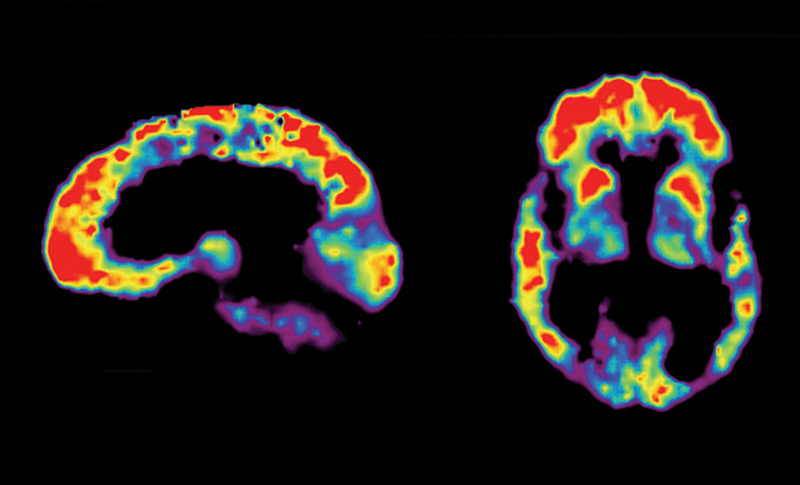
Alzheimer’s diagnosis disputed in up to 50% of PET study subjects
James Hendrix and Alzheimer’s Association colleagues are conducting a study to see how PET scans could change the nature of Alzheimer’s diagnosis and treatment. 4,000 of 18,000 subjects have been tested to date, with a stunning result showing that a significant portion of people with mild cognitive impairment or dementia who are taking medication for Alzheimer’s may…
-

Sensor glove translates sign language, mimics gestures
UCSD’s Timothy O’Connor and Darren Lipomi have developed The Language of Glove — glove that wirelessly translates American Sign Language into text, and controls a virtual hand to mimic sign language gestures. It was built for less than $100 using stretchable and printable electronics. Nine silicon-based polymer sensors, with a conductive carbon paint, were taped…
-

AI used to study brain blood flow ties to Schizophrenia
Mina Gheiratmand, Serdar Dursun, and University of Alberta colleagues used IBM AI tools to try to identify schizophrenic traits based on a person’s brain blood flow. 95 participant fMRI images of schizophrenia-diagnosed and healthy patient brains were analyzed. The researchers claimed to accurately diagnose patients, based on blood flow, 74% of the time. They also…
-
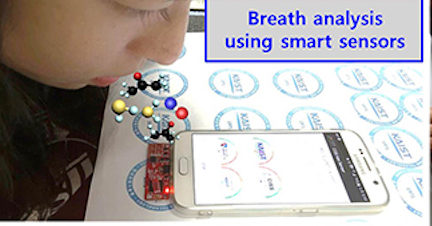
Sensor detects asthma, cancer, diabetes in breath
KAIST professor Il-doo Kim 김일두 has developed a sensor that can diagnose diseases by measuring the concentration change of the specific gases in the breath, with out blood or imaging tests. Animal protein is used as a catalyst. The researchers claim that detection can be done at the time of disease metabolism, enabling early diagnosis. Hydrogen, acetone, toluene,…
-
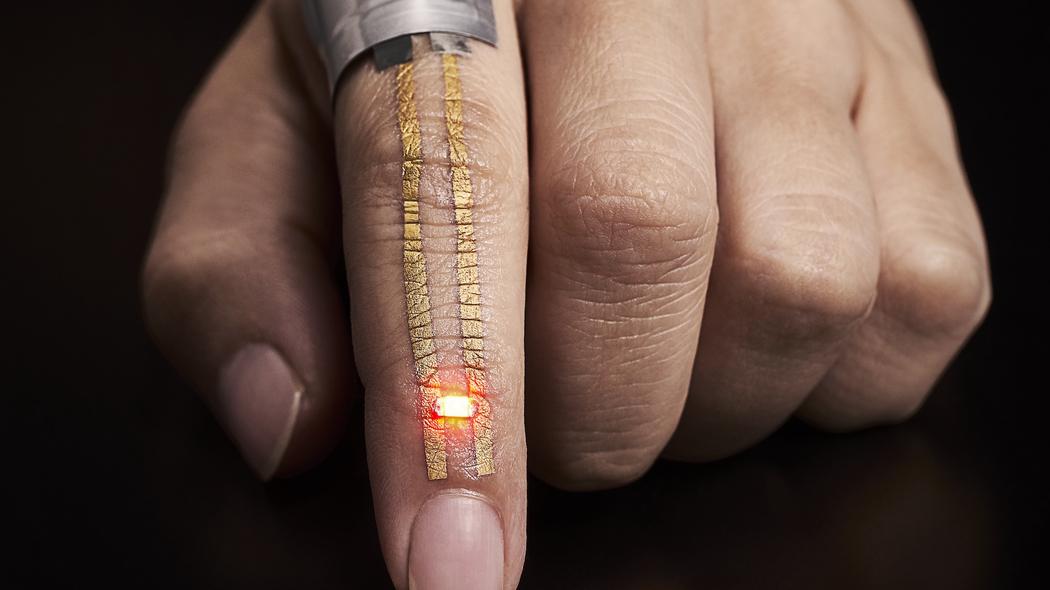
Hypoallergenic, continuous, week-long health wearable
University of Tokyo professor Takao Someya has developed a hypoallergenic, adhesive, continuous health sensor. The device can be worn comfortably for a week because of its nanoscal mesh elastic electrodes. This allows the skin to breathe, preventing inflammation. The electrodes contains a biologically compatible, water-soluble polymer, polyvinyl alcohol, and a gold layer. The wearable is applied…
-

Direct brain path for sight, sound via implanted microscope
Rice University’s Jacob Robinson, with Yale and Columbia colleagues, are developing FlatScope — a flat, brain implanted microscope that monitors and triggers neurons which are modified to be fluorescent when active. While capturing greater detail than current brain probes, the microscope also goes through deep levels that illustrate sensory input processing — which they hope to…
-

AI driven, music-triggered brain state therapy for pain, sleep, stress, gait
The Sync Project has developed a novel, music-based, non-pharmaceutical approach to treating pain, sleep, stress, and Parkinson’s gait issues. Recent studies showed Parkinson’s patients improved their gait when listening to a song with the right beat pattern, and post surgery patients used 1/3 the amount of self-administered morphine after listening to an hour of music.…
-

Algorithm-adjusted exoskeleton enables movement optimization, personalization
Juanjuan Zhang, Steven Collins and CMU colleagues have developed an algorithm that enables ankle exoskeletons to adapt to the wearer’s walk called “Human in the Loop Optimization.” In a recent study, by using indirect calorimetry to measure metabolic rates, torque was adjusted while users were walking, running, and carrying a load. At this stage, a…
-
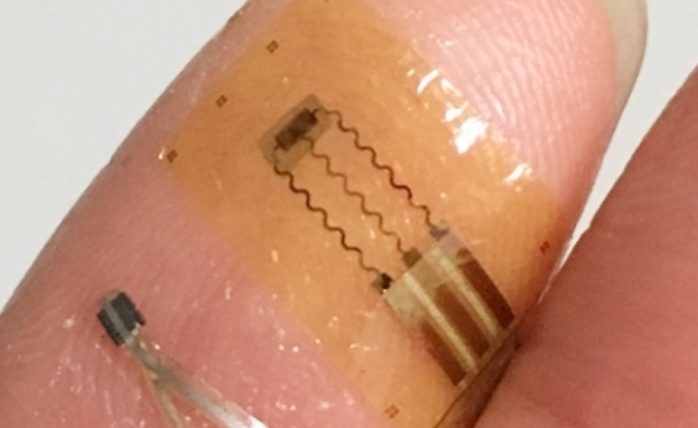
Thin, flexible, adhesive, continuous, cuffless blood pressure sensor
Zhao Ni and Yuan-ting Zhang of the Chinese University of Hong Kong have developed an ultra-thin, waterproof, cuffless blood pressure sensor that can be worn on the wrist, woven into clothes or bed sheets, or integrated into an earpiece. The monitor detects blood flow and monitors health data through color reflected by skin and image depth.…
-
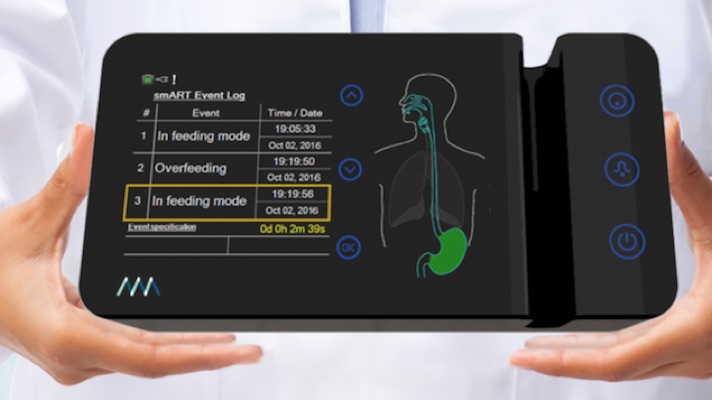
Sensor-embedded respiration, feeding tubes in the ICU
Art Medical‘s sensor-embedded feeding and respiratory tubes provide continuous measurement of gastric reflux and, saliva. These secretions, currently measured manually in the ICU, can cause aspiration pneumonia and ventilator associated pneumonia, which can prolong hospital stays, or cause death. Urine output is also measured, in an attempt to prevent kidney failure. The company’s digestive, respiratory, and…
-
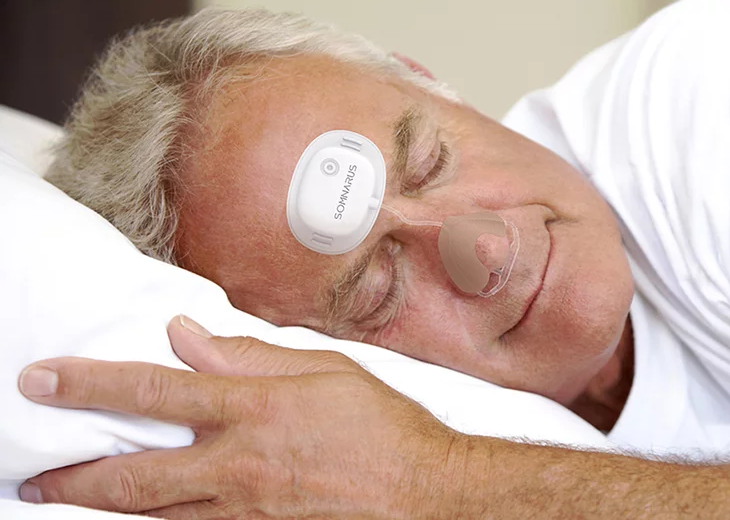
Adhesive patch + nose wearable detect sleep apnea
Somnarus has developed a disposable, adhesive patch that detects obstructive sleep apnea at home. The SomnaPatch is worn on the forehead, wth an addtional piece on the nose. It records nasal pressure, blood oxygen saturation, pulse rate, respiratory effort, body position and how long a patient is asleep. An 174-patient study showed that results from the…